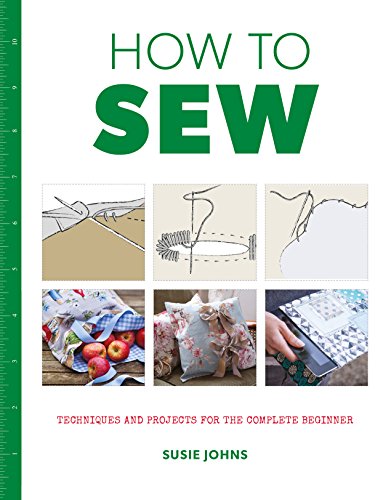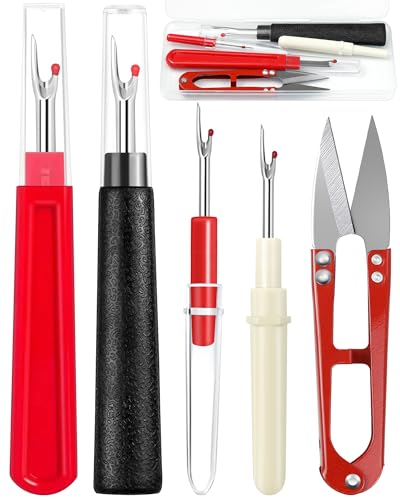I’ve always loved giving gifts, but there’s something extra special about wrapping them in a handmade fabric gift bag. Not only does it add a personal touch, but it’s also reusable and eco-friendly—a win-win! Whether it’s for a birthday, holiday, or just because, these bags make any present feel even more thoughtful.
Benefits Of Sewing A Fabric Gift Bag
Sewing a fabric gift bag offers several practical and creative advantages. These bags serve as an eco-friendly alternative to paper gift wrap, reducing waste from disposable materials. Reusable fabric bags can last for years, making them a sustainable option for gift-giving.
Personalizing fabric gift bags adds a special touch. By choosing fabrics, colors, or patterns that match the recipient’s preferences, I create a thoughtful, unique presentation. Adding embellishments like embroidery, ribbons, or appliqués can elevate the design further.
Crafting fabric bags allows me to save money in the long run. While the initial cost of materials may seem higher, reusable bags eliminate the need for repeatedly purchasing gift wrap. I also utilize fabric scraps from previous projects to minimize waste.
Durability is another advantage. Fabric gift bags retain their quality through continuous use, unlike paper options that tear easily. They’re ideal for holding heavier or oddly shaped items like books or jars.
Overall, making fabric gift bags combines creativity with functionality, ensuring a lasting, eco-conscious way to enhance gift-giving experiences.
Materials And Tools Needed
Creating fabric gift bags requires a few essential tools and materials to ensure a smooth sewing process and high-quality results. Here’s what I use when making these eco-friendly bags.
Essential Sewing Tools
- Sewing Machine: A basic machine with straight and zigzag stitches is ideal for this project. I often use mine for faster, uniform seams.
- Fabric Scissors: Sharp scissors cut fabric cleanly, preventing frayed edges. I reserve mine exclusively for fabric cutting to maintain precision.
- Measuring Tape or Ruler: Accurate measurements ensure proper bag sizes. I prefer a flexible measuring tape for curved edges and a ruler for straight cuts.
- Pins or Clips: These hold fabric layers securely while sewing. I alternate between straight pins for thinner materials and clips for thicker ones.
- Iron and Ironing Board: Pressing seams during construction gives the bag a polished, professional look.
Recommended Fabrics
- Cotton: Lightweight and easy to work with, cotton is my go-to for most gift bags. Printed cotton fabrics offer endless design possibilities.
- Linen: For a more elegant finish, I choose linen. It’s durable yet lightweight, making it perfect for reusable bags.
- Canvas: When I need a sturdy bag for heavy gifts, I use canvas. Its heavier weight adds structure to the final product.
Additional Supplies
- Thread: Choosing a thread color that matches or contrasts the fabric adds a decorative element. I usually opt for polyester thread because it’s strong and versatile.
- Ribbon or Twine: These create functional, stylish closures. I match the colors to the fabric for a cohesive look.
- Fabric Chalk or Marking Pen: These are essential for marking cutting and sewing lines. I always check that the markings are erasable.
- Decorative Embellishments: Buttons, appliqués, or fabric paint help customize the bags. Adding these small touches makes the gift feel extra special.
Having these tools and materials ready makes sewing fabric gift bags an enjoyable and rewarding process.
Step-By-Step Guide: How To Sew A Fabric Gift Bag
Creating a fabric gift bag is straightforward and enjoyable. Follow this guide to transform simple materials into a reusable, personalized bag.
Preparing The Fabric
Wash and iron the fabric before starting. Pre-washing ensures the material won’t shrink later, and ironing smooths out creases, making cutting and sewing more precise. Select a fabric suitable for the type of gift, such as cotton for lightweight versatility or canvas for heavier items.
Cutting And Measuring
Measure and cut the fabric to the desired size using fabric scissors and a measuring tape. For a small bag, cut two rectangles, each 10 inches wide by 12 inches long. Use fabric chalk to mark cutting lines, ensuring straight edges. Adjust dimensions according to the gift’s size.
Sewing The Main Bag
Place the fabric pieces together, with their right sides facing in. Pin or clip along the edges to secure them. Sew the sides and bottom edges with a straight stitch, leaving the top open. Use a 1/4-inch seam allowance for a clean finish. Backstitch at the beginning and end to secure the seams.
Adding A Drawstring Or Closure
Fold the top edge of the bag down by 1 inch, then iron to create a crease. Sew along the bottom edge of this fold to form a casing for the drawstring, leaving a small opening. Thread a ribbon or cord through the casing using a safety pin. Knot the ends of the drawstring to prevent fraying. For other closures, such as snaps or buttons, attach them according to the manufacturer’s instructions.
Tips For Customizing Your Fabric Gift Bag
Customizing a fabric gift bag enhances its charm and makes it uniquely suited to the recipient. Personalizing your design allows you to tailor it to different occasions or preferences.

Choosing Unique Patterns
Selecting distinctive fabric patterns gives your gift bag a special touch. I recommend choosing seasonal prints like snowflakes for holidays, floral designs for spring, or geometric patterns for modern aesthetics. If the recipient has a favorite color, pick a fabric that highlights that hue to make the gift bag feel more personal. For a universally versatile option, consider neutral tones with subtle designs.
Adding Embellishments
Embellishments elevate a fabric bag’s appearance. For a festive vibe, attach small bells, tassels, or glittery appliqués. Sew patches or embroider initials for a more personalized approach. Using lace, buttons, or fabric paint can add depth and creativity. I often sew contrasting trims along the edges or pockets to make the bag stand out.
Making Different Sizes
Creating gift bags in various sizes accommodates different gifts. I suggest smaller bags for jewelry or keepsakes, medium-sized ones for books or candles, and larger ones for bulkier gifts like clothing or toys. Experimenting with dimensions like 8×10 inches for small bags and up to 14×18 inches for large ones ensures versatility in your collection.
Common Mistakes To Avoid
Skipping Pre-washing the Fabric
Washing the fabric before starting ensures no shrinkage after the bag is sewn. If skipped, the bag may warp or change size with the first wash.
Ignoring Seam Allowances
Measuring too close to the fabric edge can lead to weak seams that may unravel. I keep at least a 1/4-inch seam allowance to maintain durability.
Using the Wrong Needle or Thread
« How to Sew a Cardigan with Knit Fabric: Easy Tips for a Stylish DIY Masterpiece
How to Make an Apron for Cooking: Easy DIY Guide to Save Money and Add Personal Style »
Choosing an inappropriate needle or thread can damage the fabric or weaken the stitches. I match the needle type and thread weight to the fabric, such as using a universal needle with cotton or a sharp needle for lightweight materials.
Forgetting to Backstitch
Failing to backstitch weakens the seams, causing them to split under tension. I always backstitch at the start and end of each seam to secure it.
Cutting Uneven Fabric
Uneven fabric edges can misalign the sides, creating a crooked bag. I use a rotary cutter and ruler to ensure straight, even cuts for accuracy.
Overcomplicating the Drawstring Channel
Making the drawstring channel too narrow restricts the drawstring movement. I allow at least twice the width of the drawstring material to avoid frustration during assembly and use.
Conclusion
Sewing fabric gift bags is such a rewarding way to add a personal and thoughtful touch to any gift. They’re not only practical and eco-friendly but also a creative outlet that lets you make something truly unique for your loved ones. Plus, knowing that these bags can be reused again and again makes them even more special.

Whether you’re new to sewing or a seasoned pro, crafting these bags is a fun and fulfilling project. With a little effort and attention to detail, you’ll have beautiful, durable gift bags that are sure to impress. Happy sewing!

















